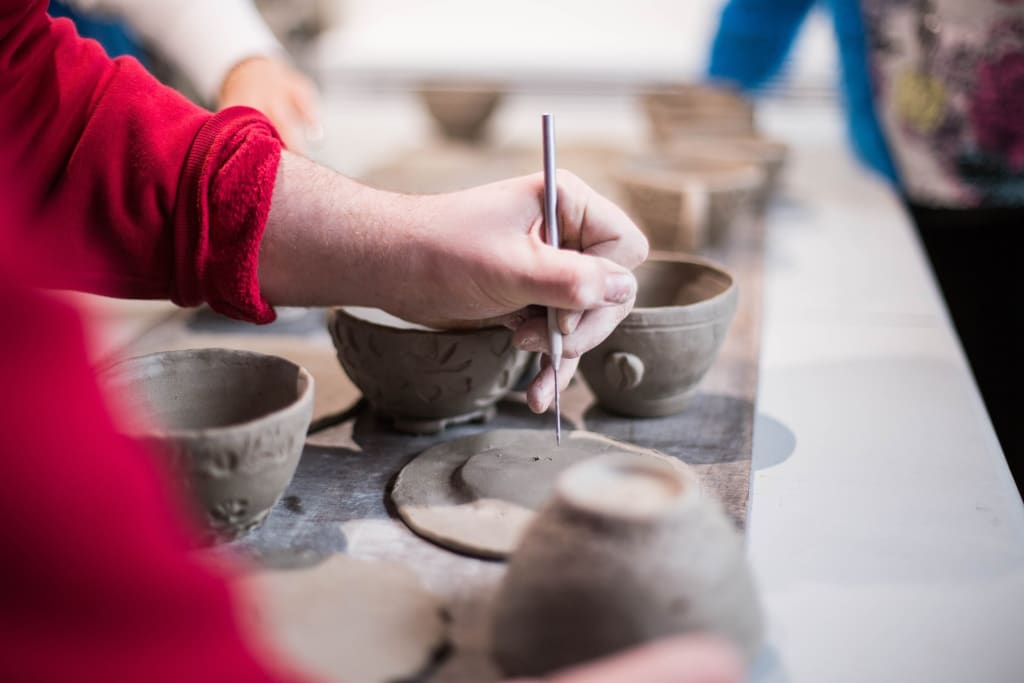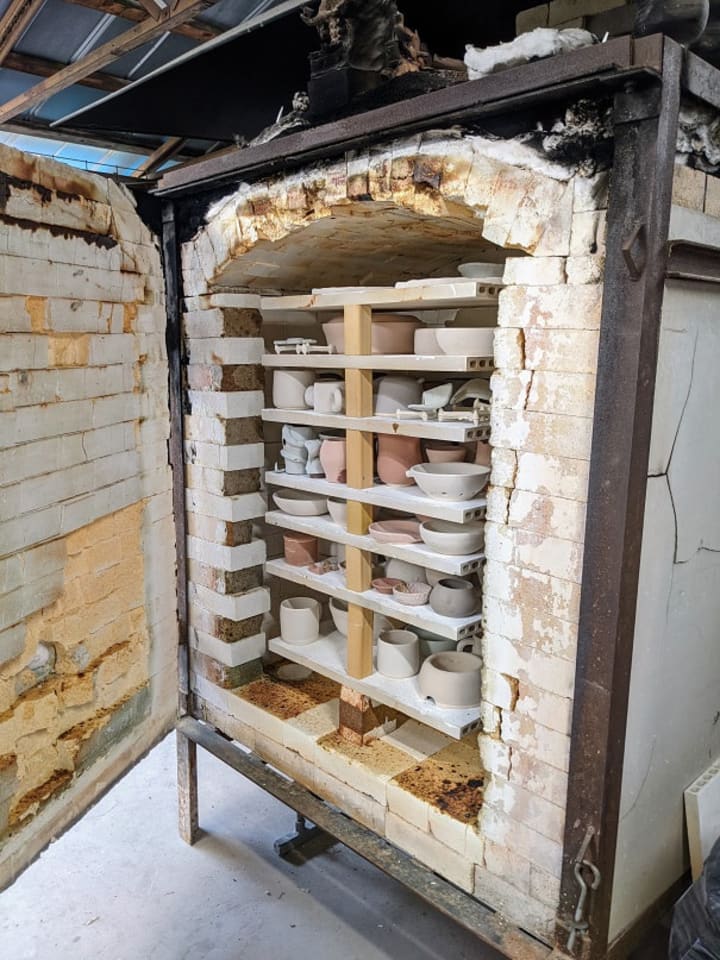Crafting With Clay
Getting Started In Pottery

Pottery has been a vital part of our lives for centuries. It is one of the oldest forms of art. Nearly every civilization has used pottery for both practical and aesthetic purposes. Pottery is forming vessels and objects out of clay and then firing them at high temperatures, giving them a hard, durable form. The most common type of clay used is Earthenware Clay. It is an affordable and easy hobby for beginners to get into it. You can also make a career out of the craft. If you wish to become a professional Potter (someone who works in pottery) here are the first steps you need to take.
Choose A Technique

When getting started, it’s best to focus on one of the three main types of pottery, which are: pottery wheel, hand-building, or slip-casting. Pottery wheel, or throwing pottery, is the most common form. It’s pottery created using a special wheel that is operated by a foot pedal or hand crank. This creates a more professional look on your pieces. So, if you plan on selling your wares, this is the preferred method. Hand-building is the oldest technique. This is shaping clay by hand, creating a more homemade look. Slip-casting is a unique method. Slip is liquefied clay that you pour into plaster molds to cast them.
Purchasing Your Tools

The equipment you need depends on the technique you choose. For thrown pottery, your primary tool of the trade is a pottery wheel. They vary in price from $150-$2,000. As a beginner, a cheaper model will work just fine. For the hand-building method, you’ll need a rolling pin or slab roller to make the clay more manageable. The Pottery Starter Kit by Mudtools provides you with a set of hand tools to carve shapes into your work. For slip-casting you’ll need an assortment of plaster molds. Regardless of which method you pick, the important tool of the trade will be a kiln. As a beginner, you don’t want to purchase one right away. Instead, look at kiln renting sites like https://www.kilnshare.com/search/ for ones available in your area.
Preparing Your Clay

Before beginning any major or minor project, you must first prepare the clay for it by doing a process called “Wedging”. “Wedging” means getting all the air bubbles out of the clay. It also wakes the clay up, making it softer and easier to mold. To perform a perfect “Wedging” you’ll knead your clay like you would bread dough, pushing out as much air as possible. Another reason this process is so important is that it’s a safety issue. When you fire your pottery in the kiln, the heat will turn the moisture on it into steam. If there are air bubbles, the steam will get trapped in it. This will lead to it cracking or the piece exploding inside of it.
Using A Kiln

Once your piece is wedged, shaped, and dried completely, it’s ready for the kiln. The kiln hardens the clay. Before firing it, make sure the kiln is completely cleaned both inside and out, along with all the tools in it. Make sure the elements, electrical cords, connection, and all pieces are in good working order. Place it in a secluded and ventilated area. Make sure the thermocouple is clear. This is what measures the inside temperature of the kiln. Lower the piece slowly inside the kiln with proper gloves and eye protection. Once closed, DO NOT open the lid during the process. The piece will be baked twice. The first bake is called the bisque fire. It is glazed and put back in for the glaze fire.
Decorating

This stage can be done before or after the kiln phase. Many choose to do it after, but that’s your decision to make. There are many ways to make your pottery piece beautiful. You can paint, spray, stencil, sponge, or silk screen anything on your pottery. Use the tools from the starter kit to carve whatever you want in the pottery during the molding phase. Glaze it and leave it as is for a more homemade look. Underglaze needs to be applied before the actual glaze between firing stages. Slip trailing is using slip clay in place of underglaze. Burnishing is using a hard smooth object to create a shine on an object.
About the Creator
M.L. Lewis
Welcome to my little slice of pie. This blog will primarily focus on prepping and homesteading skills with a sprinkle of fiction every now and then.






Comments (1)
The rich history and versatility of pottery make it a timeless art form deeply intertwined with human civilization. From practical use to artistic expression, the enduring appeal of working with clay is evident. The accessibility of pottery as a hobby and the potential for a fulfilling career in the field make it a truly captivating craft, inviting both beginners and aspiring professionals to explore its creative possibilities.